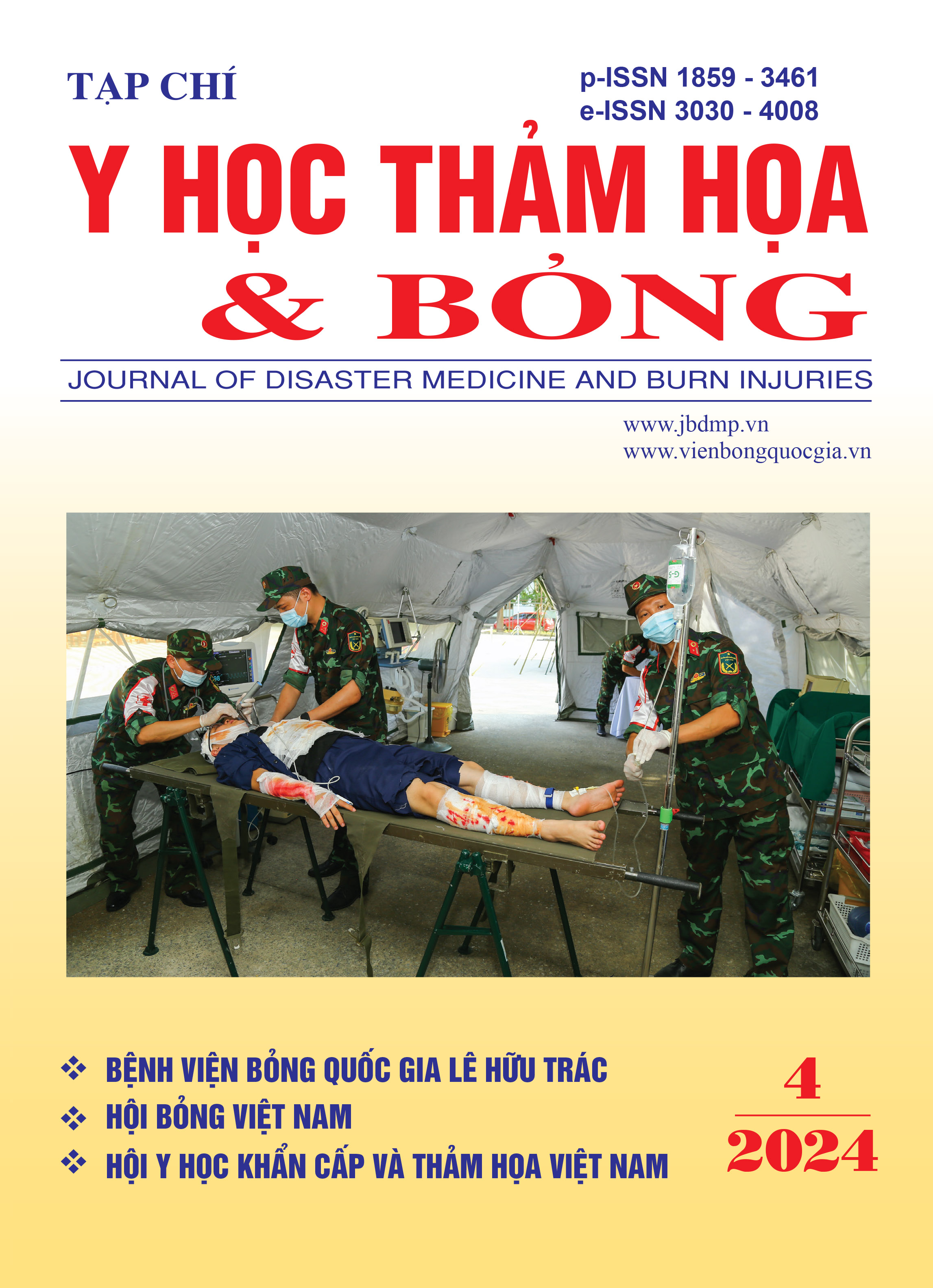Review some epidemiological characteristics of keloid patients and systemic pathological features at the Le Huu Trac National Burn Hospital
Main Article Content
Abstract
systemic pathological features.
Methods: Retrospective study, descriptive statistics based on 60 medical records of keloid patients treated at the Plastic Surgery Center, National Burn Hospital from December 2021 until March 2024. Data were processed using SPSS 20.0 statistical information software.
Results: 60 patients with females (61.7%), the common age from 14-30 (63.3%). Acne was the most common cause (41.7%). Patients with high blood pressure (6.7%). Family history with keloid (8,3)%. Common location: chest (43.3%), shoulder (28.3%). Patients with 2 or more and large keloid scars (63.3%) accompanied by contracture and ulcer scars (13,3%). Methods used to treat mainly: injections, laser, cryotherapy and surgery.
Conclusion: There are many factors related to keloid formation and more studies to provide specific epidemiological characteristics of Vietnamese keloids for further research to appropriate preventive and treatment measures.
Article Details
Keywords
Keloids, epidemiology
References
2. Lee H. J. and Jang Y. J. (2018) Recent understandings of biology, prophylaxis and treatment strategies for hypertrophic scars and keloids. International journal of molecular sciences.19 (3): 711.
3. Nguyen T. A., Feldstein S. I., Shumaker P. R.. et al (2015). A review of scar assessment scales. , 34, 1.34 (1): 28-36.
4. Gold M. H., Nestor M. S., Berman B B., et al (2020). Assessing keloid recurrence following surgical excision and radiation. Burns & Trauma.8: tkaa031.
5. Lu W.-s., Zheng X.-d., Yao X.-h.. et al (2015). Clinical and epidemiological analysis of keloids in Chinese patients. Archives of dermatological research.307: 109-114.
6. Noishiki C., Hayasaka Y. and Ogawa R. (2019). Sex differences in keloidogenesis: an analysis of 1659 keloid patients in Japan. Dermatology and therapy.9: 747-754.
7. Huang C. and Ogawa R. (2014). The link between hypertension and pathological scarring: does hypertension cause or promote keloid and hypertrophic scar pathogenesis? Wound Repair and Regeneration.22 (4): 462-466.
8. Ogawa R., Watanabe A., Than Naing B B. et al (2014). Associations between keloid severity and single-nucleotide polymorphisms: Importance of rs8032158 as a biomarker of keloid severity. J Invest Dermatol.134 (7): 2041-2043.
9. Ogawa R., Okai K., Tokumura F.. et al (2012). The relationship between skin stretching/contraction and pathologic scarring: the important role of mechanical forces in keloid generation. Wound Repair and Regeneration.20 (2): 149-157.
10. Ogawa R. (2017). Keloid and hypertrophic scars are the result of chronic inflammation in the reticular dermis. International journal of molecular sciences.18 (3): 606.


